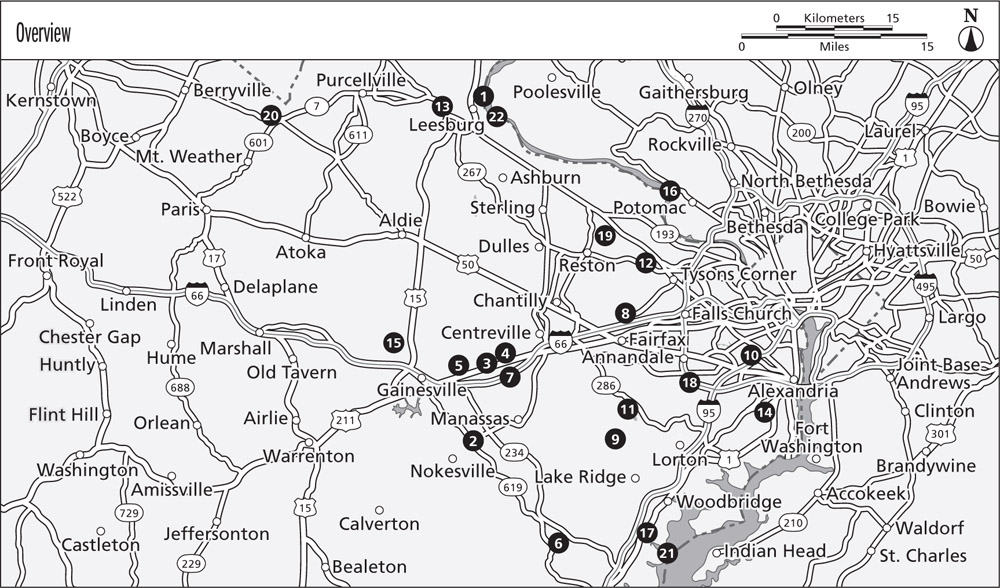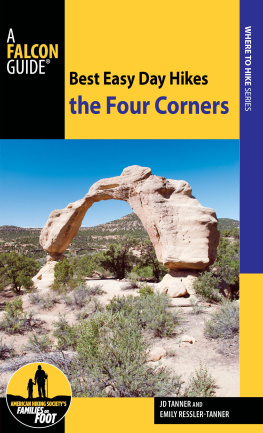
Contents
Guide

Louise Baxter is a freelance writer living in the Washington, D.C., area. She is the author of Best Easy Day Hikes Washington, D.C. and has written for the Washington Post, Travel Weekly, Yahoo Travel, and other publications. She writes primarily about the mid-Atlantic region covering travel-related subjects. She spent 11 years working in the tour and travel field, planning and operating tours throughout North America. Louise is also an ESL (English as a Second Language) teacher and an editor.
An imprint of The Rowman & Littlefield Publishing Group, Inc.
4501 Forbes Blvd., Ste. 200
Lanham, MD 20706
www.rowman.com
Falcon and FalconGuides are registered trademarks and Make Adventure Your Story is a trademark of The Rowman & Littlefield Publishing Group, Inc.
Distributed by NATIONAL BOOK NETWORK
Copyright 2021 The Rowman & Littlefield Publishing Group, Inc.
Maps by Melissa Baker
All rights reserved. No part of this book may be reproduced in any form or by any electronic or mechanical means, including information storage and retrieval systems, without written permission from the publisher, except by a reviewer who may quote passages in a review.
British Library Cataloguing-in-Publication Information Available
Library of Congress Control Number: 2020950439
ISBN 978-1-4930-5117-5 (paper : alk. paper)
ISBN 978-1-4930-5118-2 (electronic)
 The paper used in this publication meets the minimum requirements of American National Standard for Information SciencesPermanence of Paper for Printed Library Materials, ANSI/NISO Z39.48-1992.
The paper used in this publication meets the minimum requirements of American National Standard for Information SciencesPermanence of Paper for Printed Library Materials, ANSI/NISO Z39.48-1992.
The author and The Rowman & Littlefield Publishing Group, Inc. assume no liability for accidents happening to, or injuries sustained by, readers who engage in the activities described in this book.
I want to express my great appreciation for the National Park Service, Virginia State Parks, county park authorities, and private preservation organizations that do a fantastic job teaching us about history and nature, and work hard to preserve these parks. It is because of their efforts that we, and future generations, can continue to enjoy all that this region has to offer. Many thanks to my friends for their support and their great ideas for hikes. And a special thanks to my late father, Craig Baxter, who bestowed in me a love for history and words.
For 12,000 years, people have been exploring the region that is now called Northern Virginia. Many Native American tribes lived here, with its streams and forests abundant with food and rivers to navigate for trade. Captain John Smith set out to map the region in 1608, and since then it has grown steadily into farmland, cities, and now a giant metropolis outside the nations capital. It is remarkable that in such a tightly developed area, there are still spaces to breathe fresh air, listen to birds and frogs, and see fields of wildflowers.
Northern Virginia, by most definitions, encompasses the counties of Arlington, Fairfax, Loudoun, and Prince William; and the cities of Alexandria, Fairfax, Falls Church, and Manassas. In 1736, this land was part of a deed given to Lord Fairfax, a name seen all over this region. Lord Fairfax lived with his brother in Belvoir, now Fort Belvoir, until he built a lodge, named Greenway, near what is now the city of Winchester. It was here he met a young man named George Washington and hired him to begin surveying the western part of his land. When the Declaration of Independence was signed, Lord Fairfax was in his 80s, and he remained neutral during the Revolutionary War. He died shortly after the Battle of Yorktown and the end of the war.
The Washington-Rochambeau Revolutionary Route crosses the area. This was a 680-mile series of trails taken by the Continental Army from New England to Yorktown, Virginia, where the British were defeated in 1781. The route travels over the Occoquan River and through what is now Prince William Park.
After independence, the design for a federal city was drawn up that originally included parts of Maryland and Virginia. Boundary stones dating back to this time can still be seen in Arlington and Alexandria. A problem arose when citizens on the Virginia side were unhappy with the idea of lack of representation if they were part of a federal city and that the federal city abolished slavery. The Virginia portion of the land that became Washington, D.C., was never incorporated as part of the capital city and was given back by Congress in 1846.
Next page





